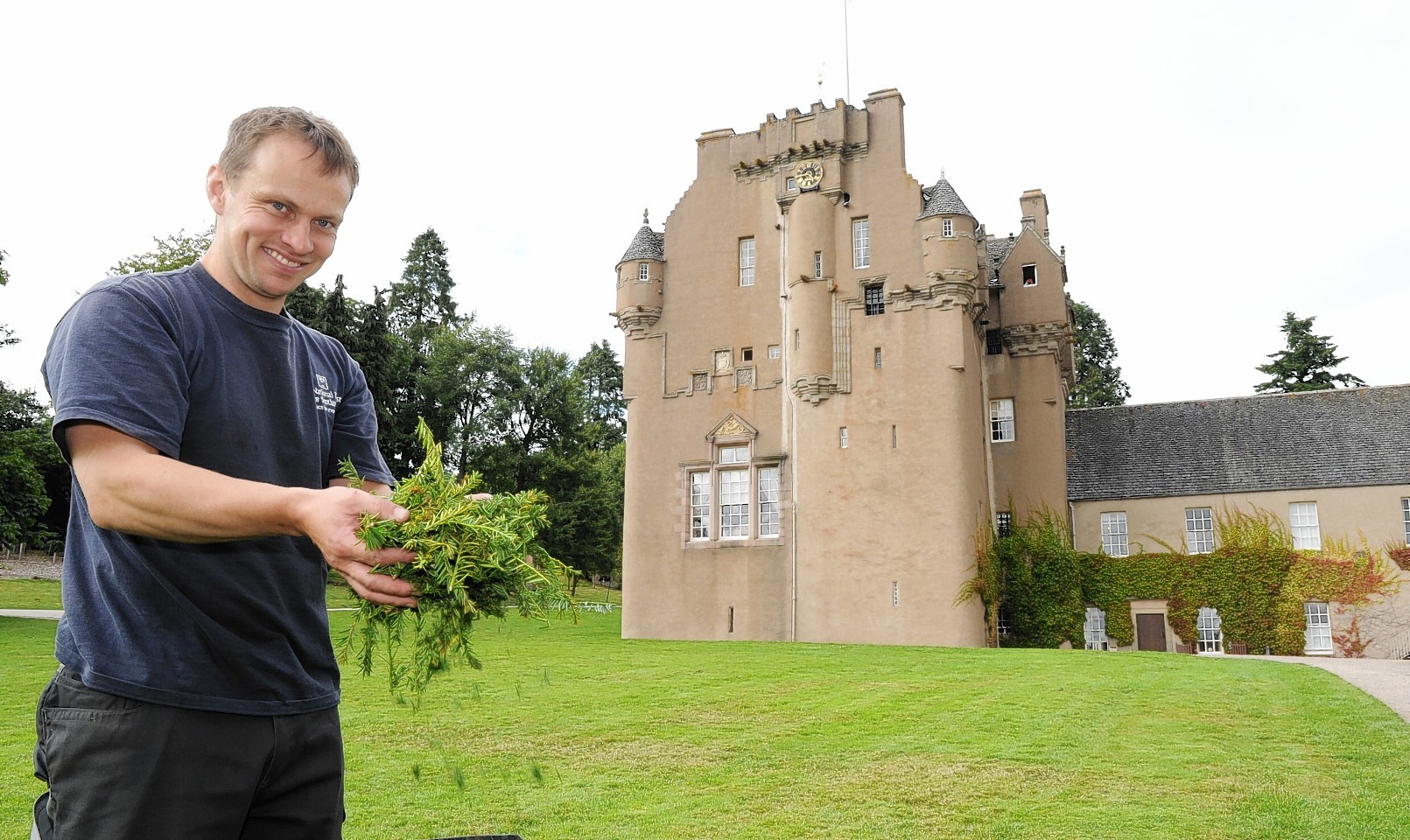It is already famous as a scenic day out in the Scottish countryside but less well known is that Crathes Castle is helping in the battle against cancer.
Gardeners at the 16th century attraction have just finished sweeping up and drying out yew clippings to be donated to the pharmaceutical industry.
The great trees and hedges contain a compound – 10-Deacetylbaccatin III – which can be used in the production of chemotherapy drugs paclitexel and docetaxel.
Paclitaxel is used to treat different cancers including ovarian, breast and non-small cell lung cancer while docetaxel can help in the treatment of breast, prostate, non-small cell lung cancer, stomach and head and neck cancer.
Both drugs can now be made synthetically in the laboratory, but the needles are still collected and used as part of the process of making the drugs.
Toby Loveday, head gardener at Crathes Castle, said: “We do get people asking us why we do this when we put the sign up.
“But I think most people are not aware of how it works unless they have been directly affected by this kind of illness.
“We did have one woman from the United States who visited and was aware part of the treatment she had been given for breast cancer was due to the yew clippings being collected.”
The clippings are dried out in a large shed before being collected by Friendship Estates, which in turn supplies them to pharmaceutical companies.
Crathes Castle has been taking yew clippings for 18 years but recently began supplying the Doncaster-based firm with clippings again after a three-year hiatus.
Matthew Cooke, yew co-ordinator at Friendship Estates, said: “The raw material for the drug was originally discovered in the Pacific yew, but it was very difficult to harvest as it was in the bark and the tree itself is very slow growing.
“But it was later discovered it could be harvested in the English yew and with a couple of changes to the compound you could make paclitexel and docetaxel.”
